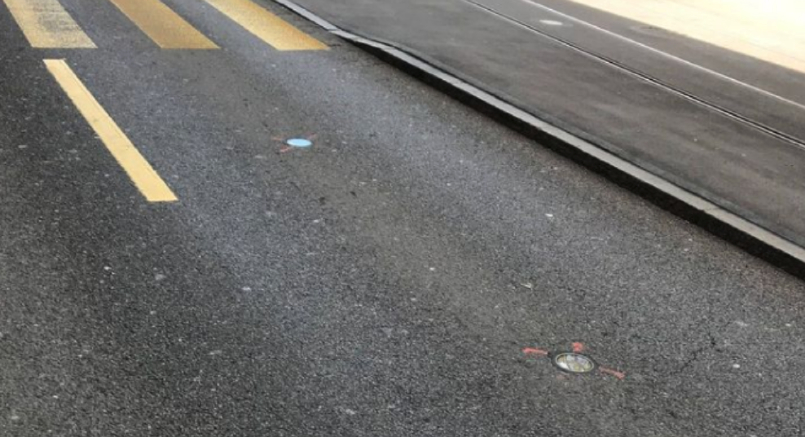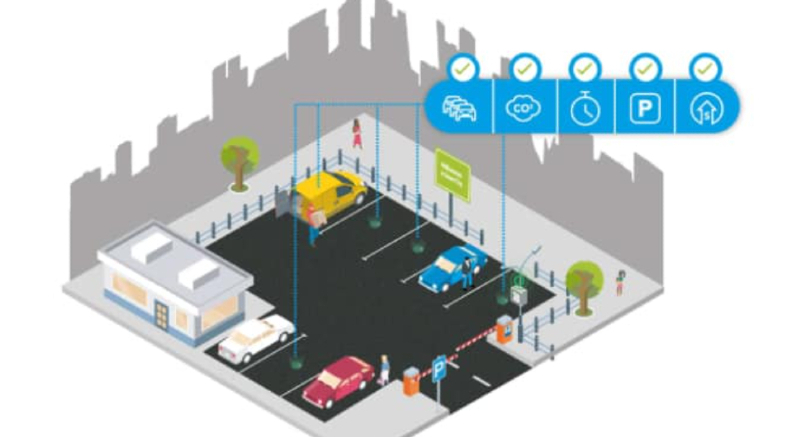
Das intelligente Parkplatzmanagement TAPS besteht aus drei Elementen:
den Sensoren
dem Gateway
der Software
Die Sensoren überwachen die Parkplätze und melden an das Gateway, ob ein Stellplatz frei oder besetzt ist. Das Gateway gibt diese Information an die Software weiter. Dort werden sämtliche Daten gesammelt und verarbeitet. So kann das Parkverhalten der Nutzer präzise analysiert werden.
Die Daten, die die Software erhält, können zudem an ein Parkleitsystem übermittelt werden. So hilft TAPS aktiv dabei, den Parksuchverkehr zu entspannen. Wir von der LTS AG bieten zwei Arten von Sensoren an:
What is the difference between ceiling sensors and ground sensors?

The designations already reveal where the sensors are placed in each case. Ground sensors are embedded in the ground, which requires little effort due to their small dimensions. One hole is sufficient, and the entire process ideally takes only 30 minutes.
This is in considerable contrast to induction loops, which are still frequently used. For this, the road or the car park has to be cut open over a large area because cables have to be sunk in addition to the loop. This leads to long closures and downtimes.
Since our sensors are energy-autonomous, they do not require an external power supply. It is therefore not necessary to lay cables.
In some places, however, it is generally not possible to drill holes. There, car park monitoring can possibly be implemented with ceiling sensors.
What are ceiling sensors used for?

We have developed our ceiling sensors primarily for use in multi-storey car parks. However, the TAPS ceiling sensors can also be used in car washes or recycling collection points. The roofing provides the necessary conditions for installation. From its position, a ceiling sensor optimally detects the parking space below. It detects whether a car is parked there or not. It delivers this information to the gateway, which in turn passes it on to the software.
The information can then be used, for example, to activate a light signal above the parking space. If the parking space is free, the light shines green; if it is occupied, a red light is displayed. In this way, drivers are already informed about the parking situation before they enter a row of parking spaces. This allows them to assess whether it is worth driving in a certain direction.
The collected information from the ceiling sensors can also be used for the car park's on-street parking guidance system. There, digital signs often show in real time how many free spaces are currently available in a car park. If only a few parking spaces are free, drivers will look for other parking options. If, on the other hand, there are still many spaces in the car park, it is interesting for those looking for a parking space.
Last but not least, the data obtained by the ceiling sensors is also extremely useful for the car park operators. They learn from the information, for example, which parking spaces are used particularly frequently or rarely. It may be possible to see whether the car park could be redesigned to optimise the number of parking spaces or their accessibility.
What must high-quality ceiling sensors offer?

In addition, they communicate with the gateway over a long range. Up to 50 metres can lie between sensor and gateway. With a repeater, this distance can be extended by 100 metres. Several repeaters can be used at the same time to increase the range even further.
In addition, they communicate with the gateway over a long range. Up to 50 metres can lie between sensor and gateway. With a repeater, this distance can be extended by 100 metres. Several repeaters can be used at the same time to increase the range even further.
Ceiling sensors should also be very resistant to external influences. Our sensors can be used in extreme temperatures as well as in high humidity. The IP68 rating that the sensors have also assures that the housing is dust-tight. This is particularly important in an environment such as a car park. The sensors have a service life of more than ten years.
The installation of the ceiling sensors should also be easy. This is also the case with our sensors. They can be connected to the mains or DC voltage on the ceiling and thus supplied with power. Users have the choice of connecting to the system with or without cables.
Commissioning is just as uncomplicated thanks to plug and play. As soon as the ceiling sensors have been attached, they are already functional. Necessary updates are installed automatically - either over-the-air (OTA) or via cable.





)
)